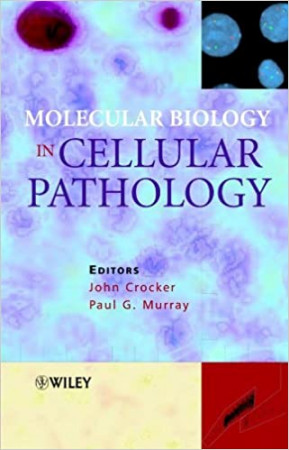Molecular Biology in Cellular Pathology
Keterangan Bibliografi
| Pengarang | : Crocker, John (editor) |
| Pengarang 2 | : |
| Kontributor | : Murray, Paul G. (editor) |
| Penerbit | : John Wiley & Sons, Ltd |
| Kota terbit | : New Jersey |
| Tahun terbit | : 2003 |
| ISBN | : 0-470-84475-2 |
| Subyek | : Pathology, Molecular- Cells – pathology |
| Klasifikasi | : 611.018 Cro m |
| Bahasa | : English |
| Edisi | : |
| Halaman | : 393 hlm.: ilus. |
Jenis Koleksi Pustaka
E-Book
Kategori Pustaka
Tidak ada kategori
Abstraksi
The rapidly developing fields of genomics and proteomics are enabling an understanding of gene expression both at the mRNA and protein level on a global scale (i.e. the whole transcriptome or proteome) not previously imaginable. Whereas gene expression studies in pathology have frequently relied purely on immunohistochemistry and in situ hybridisation, in their own right still immensely invaluable procedures, they could only essentially give information on a single gene in a single experiment. Comparative genomic hybridisation, for a long time a difficult alternative to conventional cytogenetics, will blossom with the advent of array approaches to, allowing high resolution mapping of chromosomal changes across the whole genome without the need for difficult interpretation of chromosome morphology.
The purpose of this series of volumes is to supply a guide to those just
qualified and undertaking research or to those who have taken degrees some
years in the past and who wish to glean new information rapidly. Thus, this is not a molecular ‘recipe book’; such exist elsewhere.
In the first chapter, Mr Murray and Professor Ambinder have given an account of the methods available for the demonstration of infectious agents in situ in histological material. The applications of these techniques are also outlined.
Chapters 2 and 4 by Drs Fleming, Morey and Yap, and by Drs Waters and Long,
then describe these methodologies and others as applied to the examination of malignant tissues and chromosomes in histological material.
Chapters 3 and 5 give details of other methodologies, both of which are
not histological (although one may become so). These techniques do, however, employ histological material, even of archival, paraffin wax-embedded type. Thus, Dr Young describes the value of the polymerase chain reaction in histopathology; indeed, this is already being adapted for use as an in situ method. Dr Camplejohn then describes the techniques of DNA flow cytometry and their
applications. One of the latter is that of the assessment of cell proliferative status. Leading on naturally from this, in Chapter 6 I have given an account of the molecular basis of the cell cycle and of some of the antibody probes which can be applied to visualize some of the components of the cell cycle. Also highly related to cell proliferation is the activity of the interphase nucleolar organizer region. The full significance of this structure is not yet fully understood but in
the subsequent chapter, Professors Derenzini and Ploton give an account of the morphological and molecular corollaries of the nucleolar organizer regions.
This volume gives an introduction to the currently available molecular
techniques in histology and an account of the molecular basis of certain
phenomena of importance in everyday histopathology.
Inventaris
| # | Inventaris | Dapat dipinjam | Status Ada |
| 1 | 9397/P1/2020.c1 | Ya | |
| 2 | 9398/P1/2020.c2 | Ya | |
| 3 | 9399/P1/2020.c3 | Ya | |
| 4 | 9400/P1/2020.c4 | Ya | |
| 5 | 9401/P1/2020.c5 | Ya | |
| 6 | 9402/P1/2020.c6 | Ya |
